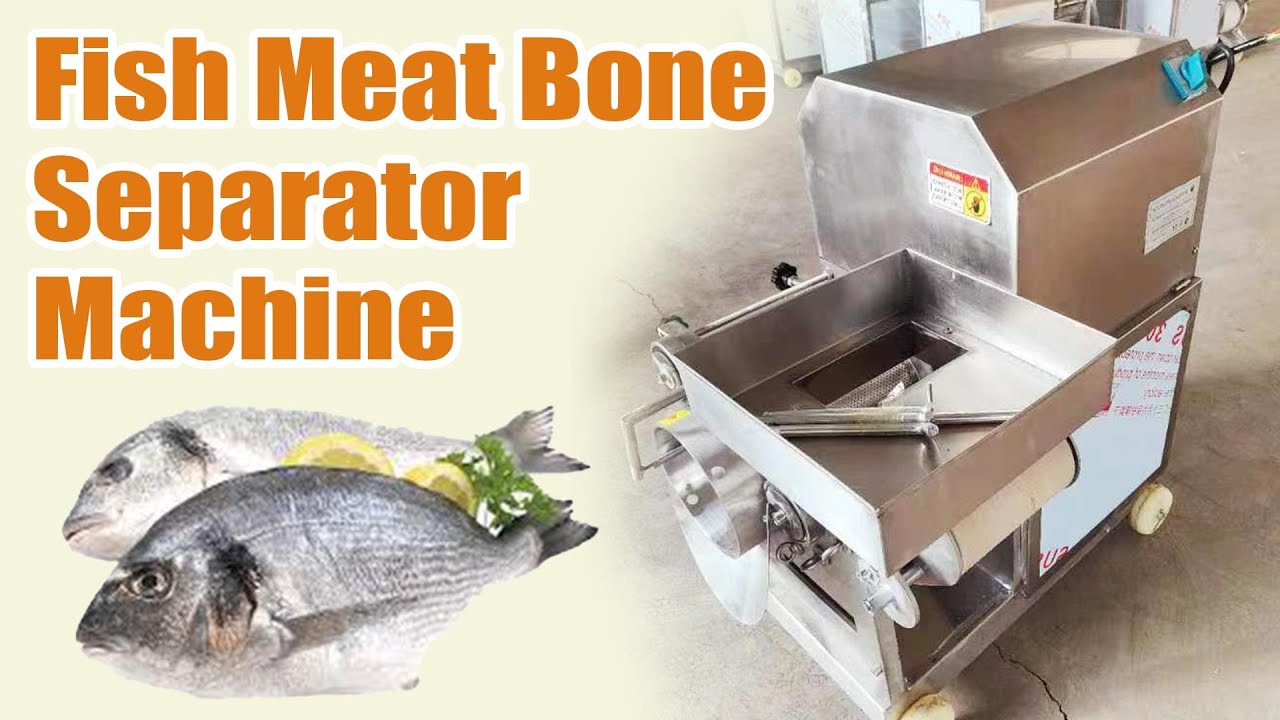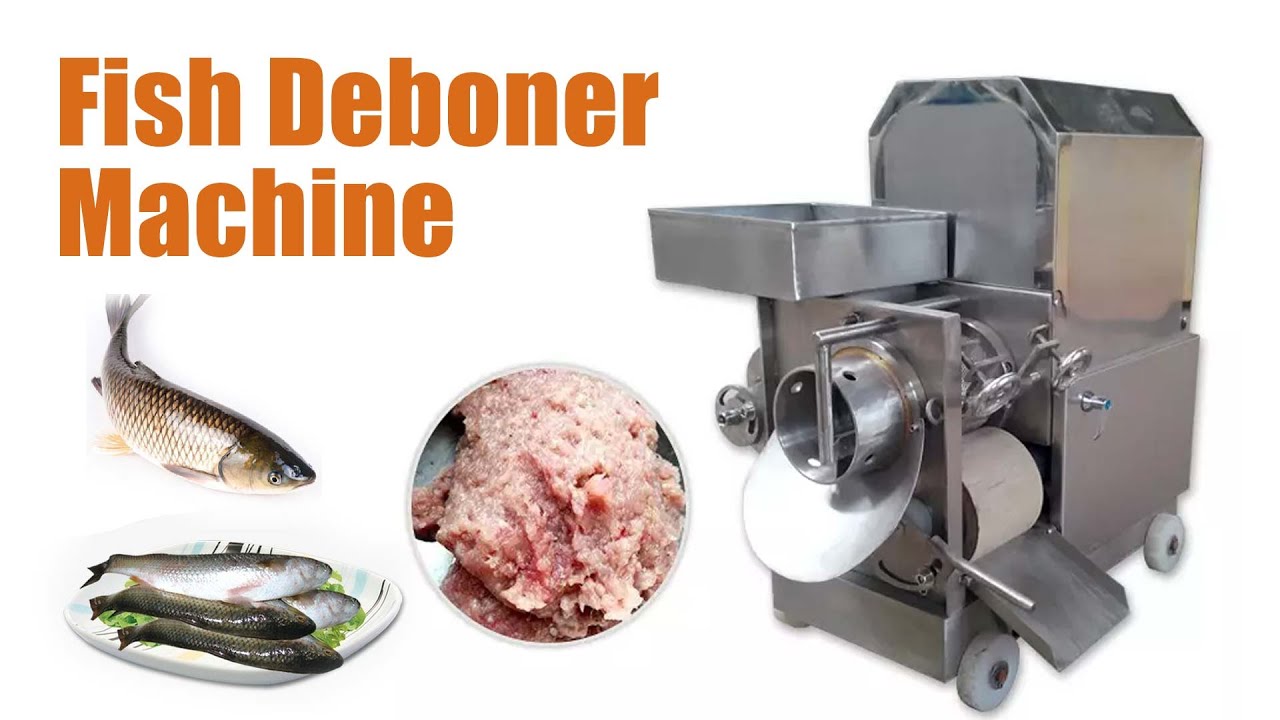10 years of experience as a food machinery equipment manufacturer
10 years of experience as a food machinery equipment manufacturer
The global seafood industry continually seeks advancements to enhance efficiency, product quality, and resource utilization. Fish processing, a critical segment of this industry, involves numerous steps from catch to consumer-ready product. One of the more labor-intensive and yield-sensitive stages is the separation of edible fish meat from bones, skin, and other non-edible parts. Traditionally, this has been done manually, a process that is not only time-consuming but can also lead to significant wastage and inconsistencies. The advent of specialized machinery has revolutionized this aspect, with devices like fish meat separators playing a pivotal role in modern processing facilities.

A Hong Kong fish meat separator, representative of a class of advanced food processing equipment, is specifically engineered to mechanically extract fish flesh from de-headed and gutted fish or fish pieces. The core operational principle involves applying controlled pressure to force the softer fish meat through perforations in a drum or via a belt system, while the harder components such as bones and skin are retained and discharged separately. This automated process distinguishes itself by its capacity to recover a high percentage of meat, including flesh that might be challenging to retrieve through manual filleting, particularly from smaller fish species or the residual parts remaining after primary filleting operations.
The operational mechanics of these separators are typically straightforward yet remarkably effective. Fish, often pre-processed (e.g., headed and gutted), are fed into a hopper, which directs them towards a processing chamber. Inside this chamber, a robust food-grade rubber or polyurethane belt works in conjunction with a rotating perforated stainless steel drum. The belt presses the fish against the drum with carefully calibrated pressure. This action squeezes the soft fish meat through the small holes of the drum, where it is collected on the inside or via a collection system. Concurrently, bones, skin, and fins, being more rigid and unable to pass through these perforations, are scraped off the outer surface of the drum by a blade or similar mechanism and expelled through a separate discharge chute.
Several key design considerations are integral to the functionality and efficiency of these machines:
The integration of a fish meat separator, such as the Hong Kong fish meat separator type, into fish processing lines offers a multitude of tangible benefits that contribute to operational excellence.
Perhaps the most significant advantage is the substantial increase in meat recovery rates. These machines are adept at salvaging considerable quantities of edible flesh from fish frames, collars, and smaller fish species that might otherwise be underutilized or discarded if relying solely on manual deboning methods. This directly translates to a reduction in raw material wastage, optimizing the value derived from each catch and improving overall profitability for the processing business.
Automation of the meat separation process drastically reduces the dependency on manual labor for this task. A single fish meat separator can process a large volume of fish in a significantly shorter timeframe than would be possible for a team of workers performing manual deboning. This leads to considerable savings in labor costs, alleviates issues related to labor shortages, and allows personnel to be reallocated to other value-adding activities within the processing plant. Furthermore, the operational speed of many machines can be adjusted to align with the throughput requirements of the entire production line.
Mechanical separation, when performed correctly with well-maintained equipment, generally ensures a more uniform and consistent texture of the minced fish meat compared to manual deboning, which can be subject to human variability. The resulting product is typically fine-textured and largely free of bones, making it an ideal base ingredient for a variety of further processed seafood products. Maintaining consistent quality requires diligent operation and adherence to machine maintenance schedules.
Modern fish meat separators are not limited to processing a single type or size of fish. They can effectively handle a wide range of marine and freshwater species, both large and small, provided the fish are appropriately prepared (e.g., scaled if necessary, headed, and gutted). This versatility makes them an invaluable asset for seafood processing businesses that deal with diverse raw material sources throughout different fishing seasons.
Designed with stringent food safety standards in mind, these machines are typically constructed for straightforward cleaning and sanitization. Features such as smooth, polished surfaces, quick disassembly of key components (like the belt and drum), and the exclusive use of food-grade materials help operators maintain high standards of hygiene, which are absolutely critical in any food processing environment to prevent cross-contamination and ensure product safety.
The minced fish meat produced by separators, exemplified by the Hong Kong fish meat separator, serves as a versatile primary ingredient in a multitude of globally consumed seafood products.

Surimi Production: A primary application is in the large-scale production of surimi, which is a refined fish protein paste. This paste forms the base for popular products like imitation crab meat (kamaboko), fish sausages, and other seafood analogues. The fine, largely bone-free mince obtained from the separator is ideal for the subsequent washing, refining, and texturizing processes involved in surimi manufacturing.
Fish Balls, Fish Cakes, and Dumplings: These items are staples in many culinary traditions, particularly in Asian cuisines. They rely on high-quality minced fish as their main component. Fish meat separators provide an efficient and consistent method for obtaining the necessary raw material in the large quantities required by commercial producers.
Fish Sausages, Burgers, and Formed Products: The minced fish meat can be expertly used to produce fish sausages, patties for fish burgers, fish fingers, and other reformed or breaded fish products. This application offers an excellent way to add value to less commercially prized fish species or to utilize trimmings from filleting lines effectively.
Pet Food Manufacturing: The by-products of the separation process, such as bones and skin (which can be further processed into fishmeal or fish oil), as well as the minced meat itself, can be valuable, high-protein ingredients in the production of premium wet and dry pet foods.
Fillings, Spreads, and Toppings: Finely minced fish is also incorporated into savory fillings for items like dumplings, spring rolls, and pastries, or used to create fish-based spreads and toppings for various culinary dishes, extending its utility beyond direct seafood products.
While fish meat separators offer considerable advantages, achieving optimal performance and longevity from the equipment hinges on proper operation and diligent maintenance. Regular inspection of the pressing belt and the perforated drum for wear and tear, strict adherence to recommended cleaning and sanitization protocols, and appropriate pre-processing of the fish (such as removing exceptionally large or hard bones, or descaling certain species if necessary for particular models) are essential practices. The skill of the operator in correctly adjusting parameters like belt pressure and feed rate also plays a crucial role in maximizing meat yield and ensuring the quality of the separated meat.
The widespread adoption of such automated technology reflects a broader and ongoing trend within the global food processing industry towards enhanced automation, greater efficiency, and improved sustainability. By maximizing the utilization of captured seafood resources, fish meat separators contribute tangibly to reducing the overall environmental footprint associated with seafood consumption. They enable processors to derive greater economic value from each unit of raw material, thereby supporting the financial viability of fishing communities and the broader seafood industry. Equipment that is associated with regions known for significant seafood processing expertise, as might be suggested by a designation like “Hong Kong fish meat separator,” often benefits from design insights accumulated through extensive practical application in demanding, high-volume commercial environments. This experience can translate into machines characterized by robust construction, reliability, and features specifically tailored for continuous, efficient operation.
In summary, the fish meat separator stands as a significant technological advancement within the seafood processing sector. Its proven ability to efficiently, hygienically, and rapidly extract high yields of valuable fish meat from a diverse array of species offers substantial economic, operational, and qualitative benefits. From bolstering resource utilization and diminishing labor costs to ensuring a consistent quality of raw material for a wide spectrum of downstream applications, these machines have become indispensable tools for modern fish processors striving for competitiveness, sustainability, and excellence in a dynamic global marketplace. The ongoing innovation and refinement of such separation technologies will undoubtedly continue to play a pivotal role in shaping the future trajectory of the international seafood industry.
